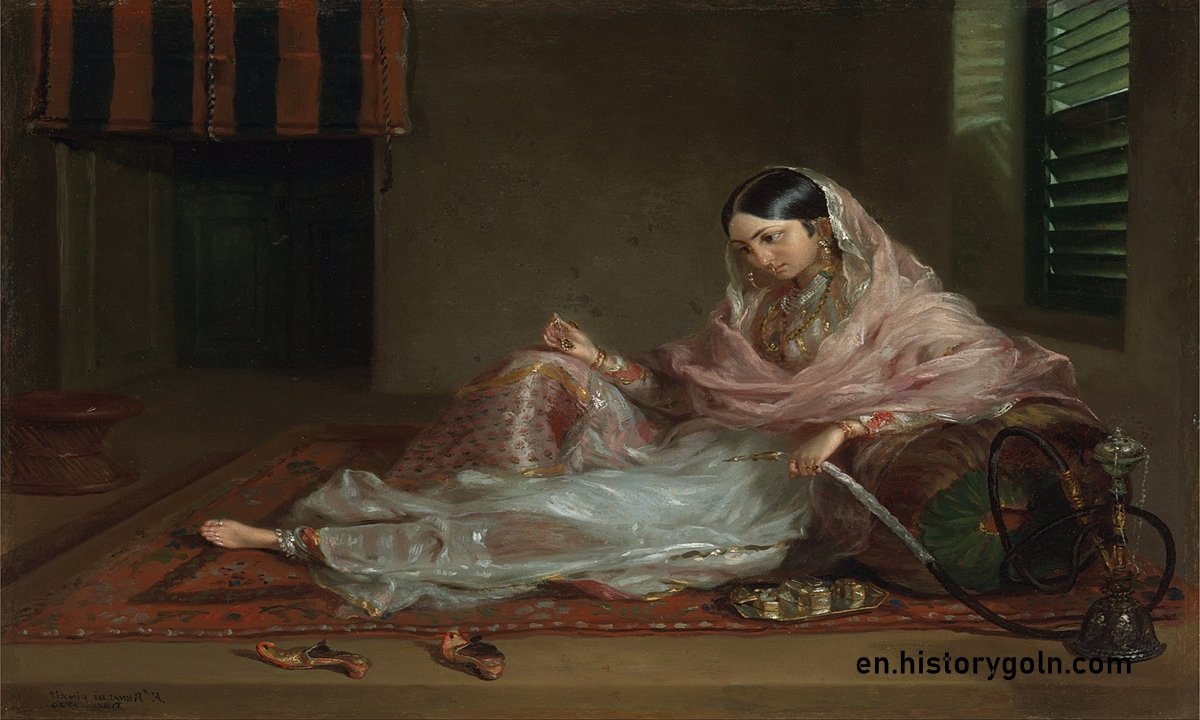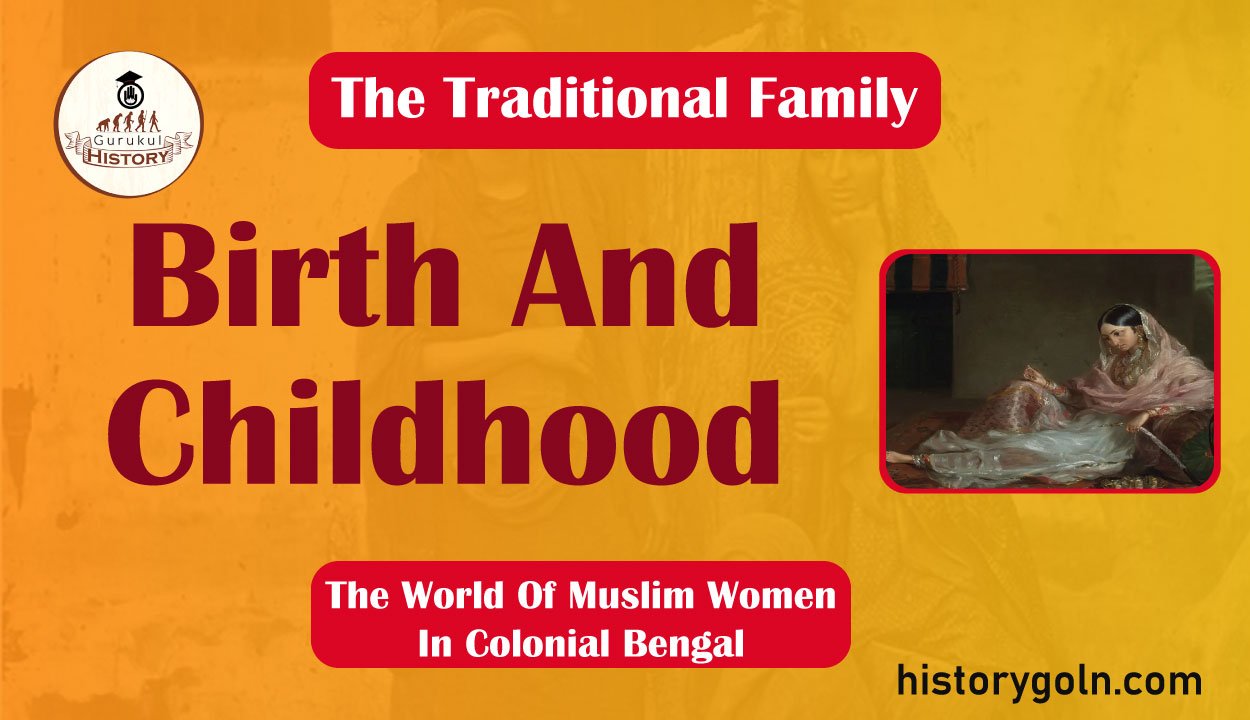Today our topic of discussion is Birth And Childhood .
Birth And Childhood

The birth of a female child was not considered as auspicious as that of a male child. Many families did not bother to herald the birth of a female child with the azaan, which is a compulsory religious custom when a male child is born.
In his memoir Ibrahim Khan recorded among other things – many rituals, customs, and attitudes of a society in transition. He wrote about his childhood locality in Tangail Sub-division and its surrounding areas. A story about the birth of a daughter:
There was no harm in the birth of sons one after another, but the birth of consecutive daughters resulted in displeasure manifesting itself in negative names such as “Chhutiwala”, “Pochi”, etc.
In a nearby village a woman after giving birth to four daughters was pregnant again. Her husband had threatened her that if she gave birth to a female child again he would divorce her and cut off her nose. When a daughter was born again, the mother prepared to leave rather than be divorced.” 15
But giving birth to daughters would not always be frowned upon (the Prophet’s great love for his daughter Fatema would often be invoked here).
In Bengal, a child would usually be born in a separate room, termed variously as shutika griha or atur ghar. This tradition was also practiced by many Muslim families.16 In most cases, this would not have to be a spatially separate room or hut built specifically for the purpose as in case of Hindu women.
Though urban families did not emphasize a separate aturghar, the practice was prevalent in rural society. The official records as depicted in Censuses and Statistical Accounts refer to similar practices in both communities. 18 One contemporary recorded his observations on child birth practices in 1873:

When a woman either Hindu or Muhammadan, approaches the term of her pregnancy, an outhouse or detached room is prepared for her to which, when labour begins she retires with a dai and a servant, This den to which the highest as well as the lowest is condemned, is known as the Asaucha-ghar.”
Women writing in the period have testified to happy childhoods, in spite of severe purdah and lack of education. The more fortunate of them who spent their early lives in sprawling houses set amid expansive grounds (before these families became urban dwellers in the truest sense of the word) have some happier memories, as we find in Rokeya:
Where may one find a comparison to our house and its grounds, shaded by forests on all sides… We rise to the ery of the morning birds; the call of the foxes signals that maghreb (evening) prayer is near… Our childhood passed in bliss in the midst of shady forests in rural Bengal .
Nawab Faizunnessa also referred to a happy childhood in the preface to Rupjalal. These women belonged to upper or middle class landed gentry which formed a part of the traditional shurafa – which soon made way for the new professional Muslim elite drawn along the lines of the Brahmo/- Hindu bhadrolok class.
They did not, by dint of their class situation, experience the hardships the vast majority of children faced every day, later, many of them had to struggle hard. The comfort and luxury of their earlier lives had become things of the past. Rokeys, Monwara, Mamlukul Fatema, and Sufia Kamal had to take up a job to make ends meet, often after their widowhood or separation; but as children, they seldom knew what hardship meant.
Their early childhoods were mostly spent inside the andar-mahal, playing with dolls or romping round the garden, listening to stories and fairy tales told by grandmothers or other elderly house- inmates, learning and reading religious texts and an occasional children’s story book.
As girls, they were also taught to help in household chores. in cooking, sewing, knitting and embroidering. From an early age, they were brought up with the “ultimate” goal of a woman in mind, that is, the role of a wife and mother.
Childhood in the period under review did not last long for a girl by present day standards. It would end almost at the age of six or seven when she would be put in purdah and shortly afterwards she would be considered ready for marriage.

Manowara recollected the end of childhood:
When I was six or seven I had already finished three Urdu texts which included Behesti Zewar and Maftuhul Jinnat (these were read out to me). My mother wanted that I should complete the instruc- tional and scriptural texts by the age of seven so that by the age of eight I could be married off.
See more:
